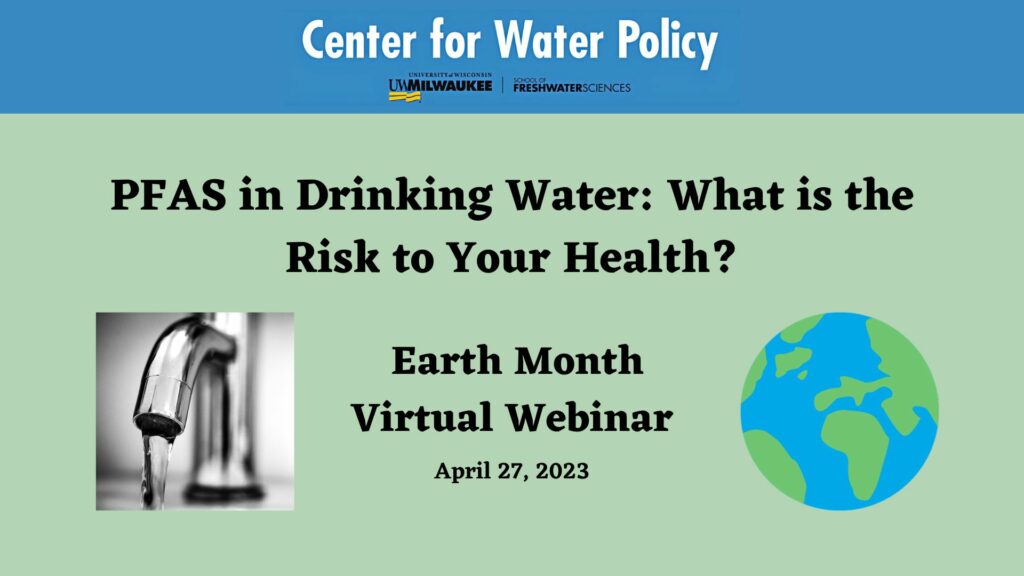
The Center’s researchers Andrian Lee and Melissa Scanlan conducted a legal analysis on PFAS Contamination in Wisconsin’s Public Drinking Water Supplies to compliment Dr. Laura Suppes’ April 2023 Earth Month Webinar on Assessing Illness Risk from PFAS Drinking Water Exposures in Wisconsin.
The US EPA and the State of Wisconsin have identified PFAS (per- and polyflouroalkyl substances) as a threat to public health, safety, and welfare. Most people in the United States have measurable levels of PFAS exposure. Even minute levels of PFAS compounds can lead to adverse health impacts. Wisconsin’s regulations currently set the maximum drinking water contaminant level at 70 parts per trillion (ppt). However, the EPA recently proposed a 4ppt maximum, which the Wisconsin DNR will have to adopt. Additionally, water utilities in Wisconsin will need to prepare to meet this lower standard.
You can read more on the legal context, timelines, implications, and recommendations in the document below.
April 2023 PFAS Contamination in Wisconsin’s Public Drinking Water Supplies Policy Brief (PDF)
Dr. Laura Suppes, 2022-23 Water Policy Scholar, presented on her research aimed at assessing illness risks from PFAS Drinking Water Exposures, which were presented at our 2023 Earth Month Webinar – Assessing Illness Risk from PFAS Drinking Water Exposures in Wisconsin. The discussion focused on her research process, results, and the PFAS Drinking Water Exposure_Risk Assessment Excel Tool she has developed.
